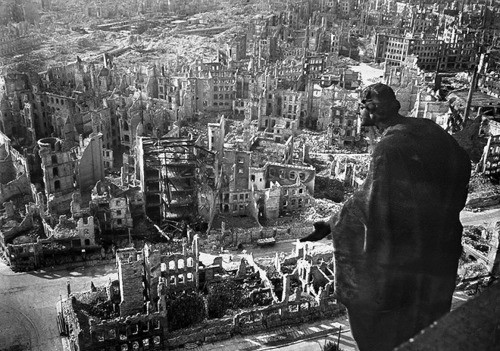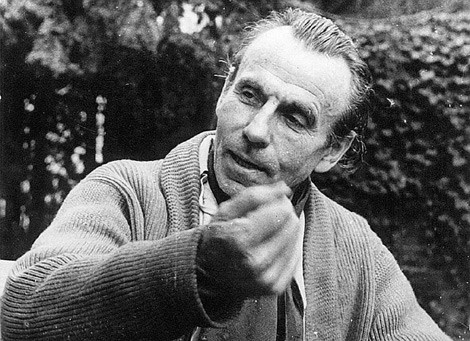
Céline, profeta de la decadencia
GISELLE DEXTER Y ROBERTO BARDINI

Ex: http://www.elmanifiesto.com/
"Rencorosos, dóciles, violados, robados, con las tripas fuera y siempre jodidos. (...) Hemos nacidos fieles y así morimos". El autor de esta frase es un médico, físico y viajero francés a quien nadie conoce por su verdadero apellido: Destouches.
En cambio, los ambientes literarios y culturales de todo el mundo reconocen su talento magistral como escritor bajo el nombre que eligió para entrar –sin saberlo, entonces– por la puerta grande de la literatura: Louis Ferdinand Céline (1884-1961). La frase citada pertenece, precisamente, a la obra que lo consagró internacionalmente: Viaje al fin de la noche.
Céline sucumbió, junto con un grupo de jóvenes y talentosos intelectuales franceses, a lo que Benito Mussolini llamó "la tentación fascista", en el período que va de la primera a la segunda guerra mundiales. Este "pecado", con variantes, también se dio en Bélgica, Holanda, Noruega, Finlandia, Croacia, Polonia y Hungría. Ninguno de estos países, sin embargo, contó con una congregación de autores tan brillante, trágica y malograda como la de Francia. Entre sus principales exponentes figuran, entre otros, Pierre Drieu la Rochelle y Robert Brasillach. A todos ellos se les aplicó, según los casos, la ley del "encierro, destierro o entierro"; todos ellos recibieron el despectivo apodo de colabos, es decir "colaboracionistas" con el enemigo.
Una intelectual italiana antifascista y feminista, María Antonietta Machiochi, define a Céline como "el más genial de los escritores nazifascistas". A muchos historiadores, literatos y críticos les resulta muy difícil digerir esta doble realidad que incluye el reconocimiento a su genialidad como escritor y su identidad "políticamente incorrecta". Y, por si fuera poco, hay que agregar una faceta más: su rabioso antijudaísmo.
"Uno de los gigantes de nuestra época"
Lo cierto es que no existe polémica acerca de su talento; casi todos los prólogos a sus obras incluyen, junto con el repudio a su elección ideológica, las alabanzas al estilo literario: "escritura hablada", "anárquica expresividad", "grafía desquiciada". Entre las etiquetas también hay que incluir "absoluto cinismo", "pesimismo radical", "nihilismo deslumbrante". Sus admiradores políticos, incluso, lo llaman "el profeta de la decadencia europea"... Y se podría continuar.
Uno de sus adversarios, Jean Paul Sartre, quien antes de convertirse en filósofo existencialista había sido simpatizante comunista, escribe en 1946: "Tal vez Céline sea el único que permanezca de todos nosotros". Etienne Lalou, novelista, cronista de L’Express y productor de radio y televisión, dice: "Céline ha restituido al francés hablado sus títulos de nobleza y, sin él, una parte de la literatura moderna no sería lo que es". Lalou, un creador alejado de cualquier cosa vinculada a Hitler y Mussolini, lo llama "uno de los gigantes de nuestra época".
Céline es voluntario en la Primera Guerra Mundial, de la que regresa con el 75 por ciento de su cuerpo mutilado. Al terminar el conflicto, comienza a estudiar medicina. Egresa en 1924, con una tesis sobre el médico húngaro Felipe Ignacio Semmelweis (1818-1865), a quien un colega contemporáneo definió como "un poeta de la bondad". Esa tesis se convertirá en 1937 en Semmelweis, una bella biografía sobre el investigador que luchó contra la fiebre puerperal hasta el último día de su vida. En la nota preliminar de este libro, el novelista español Juan García Hortelano (1928-1992) escribe:
"La agresividad, componente indispensable de la obra maestra, alcanza en Céline al universo entero y verdadero. En el caos, el asesinato, la injusticia, el terror y la debilidad juegan la partida; el que pueda envidar, gana; sólo perderán los débiles, para quienes la opción se limita a la fuga o la muerte. Céline, en absoluto partidario del suicidio, es el primer escapista que, refractario a la mentira, no huye. Tampoco se apiada (...).Destruye el mundo, minuciosamente (...), con el arma que supo manejar. Céline es un lenguaje nuevo. Del francés hablado, mal hablado, destiló un sistema de ruptura de la lengua, en el que reside toda su gloria".
Novela "irreductible y salvaje"
Céline se alista en la marina. De 1924 a 1928 integra misiones de la Sociedad de Naciones en África y Estados Unidos; por su cuenta, visita la Unión Soviética. Al regreso a Francia, trabaja en una clínica estatal en Clichy, un suburbio al norte de París, donde prácticamente sólo atiende a pobres. En 1940, se presenta nuevamente al ejército como voluntario pero es rechazado por las secuelas de sus heridas anteriores.
Su obra incluye los siguientes títulos: Viaje al fin de la noche (1932), Muerte a crédito (1936), Mea Culpa (publicado luego de su regreso de la Unión Soviética, 1936), Bagatelles pour un massacre (1937), L´école des cadavres (1938), Les Beaux Draps (1941), Guignol´s Band (1943), Casse Pipe (1949), Feerie pour une autre fois (1952), De un castillo a otro (1957), Norte (1960) y Rigodon, publicada después de su muerte.
Con Viaje al fin de la noche gana el premio Renaudout. Ferdinand Bardamu, el protagonista de la novela, es un héroe desilusionado y castigado que vive experiencias extremas, siempre al borde del abismo: herido en la Primera Guerra mundial, enamorado de una prostituta sin futuro, víctima de un trabajo embrutecedor en las colonias francesas en África, perseguidor del "sueño americano" –que no se parece al del publicitado mito– y de nuevo en Francia como médico rural de campesinos miserables.
Las reflexiones de Viaje al fin de la noche sobre la condición humana son amargas. Robert Saladrigas escribe en "Céline, el recluso de Dinamarca" (La Vanguardia, Cataluña, 24 de julio de 2002): "Novela única, irreductible, salvaje; un sólido monumento literario contra el que nada han podido el tiempo, los tifones de la historia ni la aberrante ideología de quien la escribió con un talento que desborda cualquier esquema en el que se pretenda encajarla. Es difícil no pensar en una poderosísima creación de la naturaleza que resulta literalmente abrumadora". En Viaje al fin de la noche se lee:
"Los hombres se aferran a sus cochinos recuerdos, a todas sus desgracias, y no se les puede sacar de ahí. Con eso ocupan el alma. Se vengan de la injusticia de su presente revolviendo en su interior la mierda del porvenir. Justos y cobardes que son todos, en el fondo. Es su naturaleza. (...) Os lo digo, infelices, jodidos de la vida, vencidos, desollados, siempre empapados de sudor; os lo advierto: cuando los grandes de este mundo empiezan a amarlos es porque van a convertirlos en carne de cañón".
Un destino trágico
Después de la caída del régimen de Vichy, la vida de Céline será una sucesión de sufrimientos que parecen copiados de sus propias novelas. Y parece confirmarse que la vida imita al arte hasta en sus aspectos más desgarradores.
Radio Londres, portavoz de la Resistencia Francesa, ofrece una recompensa por su captura, vivo o muerto. En 1944, Céline se retira de Francia junto con las tropas alemanas. Hace una escala en Alemania, donde paradójicamente sus libros están prohibidos. De ahí, busca refugio en la neutral Dinamarca. El Consejo Nacional de los Escritores, vinculado con la Resistencia, divulga una "lista negra" con doce autores colaboracionistas; él, desde luego, es uno de ellos. Entre los escritores denunciantes se encuentran muchos envidiosos del talento del "profeta de la decadencia", que no pueden tolerar el éxito de Viaje al fin de la noche.
En septiembre de 1945, un juez le dicta orden de arresto por "traición a la patria". Poco después, una denuncia anónima informa a la embajada francesa en Copenhague que el fugitivo se encuentra en esa ciudad. El 17 de diciembre de 1945, Céline es encarcelado. El novelista permanecerá en una celda de la severa prisión de Vestre Faengsel durante 16 agónicos meses. Entre otros vejámenes, sus carceleros lo mantienen sin calefacción en pleno invierno danés. Hay que tomar en cuenta que había quedado mutilado después de la Primera Guerra; además, estaba enfermo y se le agravaron sus dolencias hasta límites insoportables: enteritis, pelagra y reumatismo. Céline sale en libertad el 24 de junio de 1947, sin cargos, con 40 kilos menos.
El juicio al escritor "maldito" se lleva a cabo el 21 de febrero de 1950, en París, en ausencia de acusado y de un abogado defensor; lo condenan a un año de prisión, pena inferior a la cumplida con carácter preventivo en Dinamarca. Puede regresar a Francia recién el primero de julio de 1951. A seis años de terminada la guerra, toda su obra ha sido destruida.
Se establece con su mujer y decenas de gatos y perros en Meudon, cerca de París. En 1953 abre un consultorio médico para atender a personas sin recursos. Se hace imprimir tarjetas de presentación en las que se lee: "Louis Ferdinand Céline - Ave del paraíso". Recibe siete u ocho cartas diarias con insultos y amenazas; y otras tantas llenas de admiración y elogios. Unas y otras lo tienen sin cuidado. Escribe: "Anarquista soy, he sido, sigo siendo. ¡Y me traen sin cuidado las opiniones!"
Poco a poco, Céline recupera el prestigio literario que, a pesar de todo, le pertenece. Pero el sistema se lo devuelve a regañadientes, haciendo constar siempre que había sido –y continuaba siendo– un "maldito". En 1953, la editorial Gallimard edita nuevamente sus libros. De la larga lista de sus obras, cuatro continúan prohibidas a casi medio siglo de haber sido escritas: Bagatelles pour un massacre, L´école des cadavres, Les Beaux Draps y Mea Culpa. Y esto en Francia, país que se reconoce a sí mismo como cuna del liberalismo, precursor de la moderna democracia, practicante del lema Igualdad, fraternidad, solidaridad.
El marginado vuelve a escribir. Relata sus experiencias durante el exilio en De un castillo a otro (1957), Norte (1960) y Rigodon, publicada póstumamente. En 2002 se divulgan sus Cartas de la cárcel. Son casi 200 mensajes originalmente escritos en el áspero papel de baño carcelario, recopilados por su biógrafo François Gibault. "Sufro mi destino. No sé de qué crímenes soy culpable. Pero esta incertidumbre puede durar –me temo– años", dice Céline en una de sus cartas. Y en otra: "Es duro tener un mundo entero de odio contra uno".
En el prefacio, Gibault, refiriéndose a los panfletos antisemitas de Céline, explica que éste "sabía lo que había escrito antes de la guerra y por qué lo había escrito". Pero cuando se descubrió el genocidio judío "aquellos panfletos adquirían un cariz trágico que nadie había descubierto ni denunciado en el momento de su publicación, mientras que él mismo aparecía como un asesino". Sus escritos, elaborados para evitar la guerra, "pero con las exageraciones sin las cuales Céline no habría sido el que era y que aparecían a la luz de los acontecimientos como incitaciones a la matanza, servían de pretexto, pese haber sido escritos antes del genocidio, para una partida de caza en la que el objetivo era él".
Carlos Manzano, traductor de Cartas de la cárcel –y de la mayoría los libros de Céline en español– respalda las afirmaciones de François Gibault: "Él sentía desprecio por los alemanes, nunca fue colaborador de los nazis. Siempre lo negó y nunca se pudo demostrar nada; después, cuando volvió a Francia, se encerró y nunca quiso hablar con la prensa ni con nadie".
En mayo de 2002, el primer manuscrito de Viaje al fondo de la noche fue subastado en París por casi un millón 800 mil dólares. Las 876 páginas del original –llenas de tachaduras y correcciones– quedaron en Francia ya que la Biblioteca Nacional interpuso su derecho prioritario para que el texto no salga del país. Para los especialistas, el hallazgo del texto tiene un valor inestimable, ya que permite comprender los mecanismos mediante los cuales se construyó una de las obras más importantes y sombrías del siglo XX. Durante más de 40 años, el original fue motivo de las más increíbles versiones: se decía que fue perdido, recuperado y quemado por Céline; también que estaba oculto en Argentina, en manos de nazis refugiados.
La suma que se pagó por el histórico escrito de Céline superó el monto en que fue subastado, en 1988 por la casa Sotheby’s, el manuscrito de El proceso, de Franz Kafka: un millón y medio de dólares. El texto del primer tomo de En busca del tiempo perdido, de Marcel Proust, otro clásico, fue rematado en 2001 por Christie’s en poco más de un millón de dólares.
Dejemos algunas reflexiones finales por cuenta de Andreu Navarra Ordoño, autor de "Céline: el hombre enfadado" (revista Babab Nº 11, Madrid, enero de 2002), quien define a Viaje al fondo de la noche como "una de las más feroces sátiras contra la civilización occidental". El escritor español se pregunta: "¿Es injustificado desentenderse del mundo cuando éste se ha convertido en una estafa universal, en algo así como una trampa a gran escala? ¿Cómo no hubiera podido enfadarse ante semejante espectáculo? ¿Niega Céline alguna vez las acusaciones de que fue objeto? En absoluto. Sí nos ofrece sus reflexiones, nunca alegaciones".
Céline falleció en Meudon en 1961, a los 77 años. En algún momento de su vida, escribió: "En este mundo vil, nada es gratuito. Todo se expía: el bien, como el mal, se paga tarde o temprano. El bien mucho más caro, lógicamente".
© Giselle Dexter y Roberto Bardini



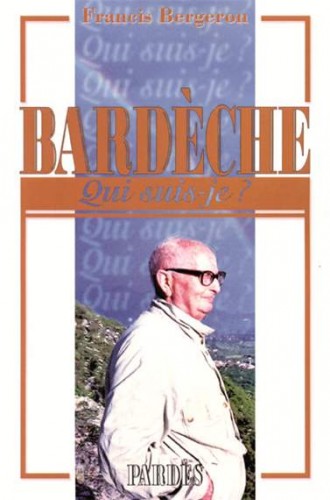 Après avoir écrit pour la même collection la biographie condensée d’Henri Béraud, de Léon Daudet, de Henry de Monfreid, de Hergé et de Saint-Loup, Francis Bergeron évoque cette fois-ci la vie d’une personne qu’il a bien connue : Maurice Bardèche.
Après avoir écrit pour la même collection la biographie condensée d’Henri Béraud, de Léon Daudet, de Henry de Monfreid, de Hergé et de Saint-Loup, Francis Bergeron évoque cette fois-ci la vie d’une personne qu’il a bien connue : Maurice Bardèche.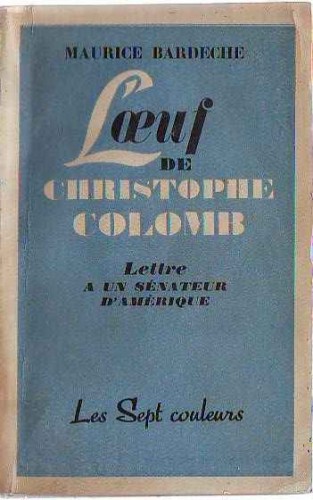 C’est sur la question européenne que Maurice Bardèche a conservé toute sa pertinence. Quand on lit L’œuf de Christophe Colomb (1952) ou Sparte et les Sudistes, on se régale de ses fines analyses. Bardèche réfléchissait en nationaliste français et européen. À la fin de l’opuscule, avant l’habituelle étude astrologique de Marin de Charette et après les annexes biographiques, bibliographiques, de commentaires sur Bardèche et de quelques-unes de ses citations les plus marquantes, Francis Bergeron reproduit l’entretien que lui accorda Bardèche dans Rivarol du 5 avril 1979 (avec les parties supprimées ou modifiées par Bardèche lui-même). Cet entretien est lumineux ! « Devons-nous accepter […] de ne pas nous défendre contre la concurrence sauvage, déclare Bardèche, accepter le chômage, le démantèlement d’une partie de notre industrie, la dépendance à laquelle nous risquons d’être contraints ? » On croirait entendre un candidat à l’Élysée de 2012… Le sagace penseur de la rue Rataud estime que « l’Europe qu’on nous prépare ne sera qu’un bastion avancé d’un empire économique occidental dont les États-Unis seront le centre »… Il prévient qu’« il ne faut pas que l’Europe ne soit que le cadre agrandi de notre impuissance et de notre décadence », ce qu’elle est désormais. Il importe néanmoins de ne pas rejeter l’indispensable idée européenne comme le font les souverainistes nationaux. L’Europe demeure plus que jamais notre grande patrie civilisationnelle, identitaire et géopolitique. « L’Europe indépendante constitue un idéal ou plutôt un objectif », juge Bardèche avant d’ajouter, prophétique, que « la crise économique peut nous aider à la faire plus vite qu’on ne le croit ».
C’est sur la question européenne que Maurice Bardèche a conservé toute sa pertinence. Quand on lit L’œuf de Christophe Colomb (1952) ou Sparte et les Sudistes, on se régale de ses fines analyses. Bardèche réfléchissait en nationaliste français et européen. À la fin de l’opuscule, avant l’habituelle étude astrologique de Marin de Charette et après les annexes biographiques, bibliographiques, de commentaires sur Bardèche et de quelques-unes de ses citations les plus marquantes, Francis Bergeron reproduit l’entretien que lui accorda Bardèche dans Rivarol du 5 avril 1979 (avec les parties supprimées ou modifiées par Bardèche lui-même). Cet entretien est lumineux ! « Devons-nous accepter […] de ne pas nous défendre contre la concurrence sauvage, déclare Bardèche, accepter le chômage, le démantèlement d’une partie de notre industrie, la dépendance à laquelle nous risquons d’être contraints ? » On croirait entendre un candidat à l’Élysée de 2012… Le sagace penseur de la rue Rataud estime que « l’Europe qu’on nous prépare ne sera qu’un bastion avancé d’un empire économique occidental dont les États-Unis seront le centre »… Il prévient qu’« il ne faut pas que l’Europe ne soit que le cadre agrandi de notre impuissance et de notre décadence », ce qu’elle est désormais. Il importe néanmoins de ne pas rejeter l’indispensable idée européenne comme le font les souverainistes nationaux. L’Europe demeure plus que jamais notre grande patrie civilisationnelle, identitaire et géopolitique. « L’Europe indépendante constitue un idéal ou plutôt un objectif », juge Bardèche avant d’ajouter, prophétique, que « la crise économique peut nous aider à la faire plus vite qu’on ne le croit ».
 del.icio.us
del.icio.us
 Digg
Digg






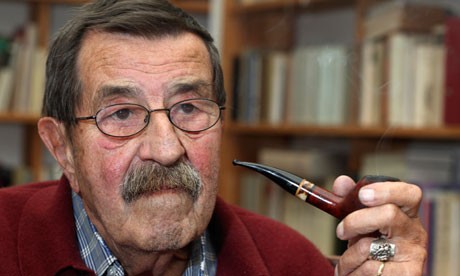
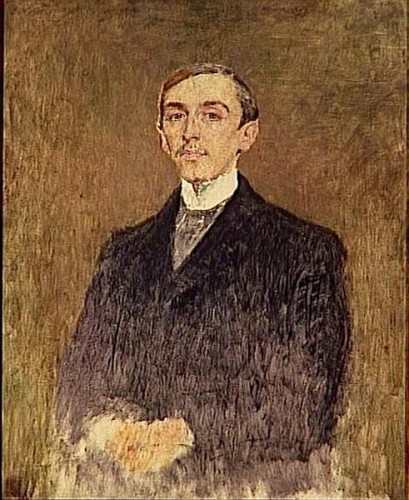
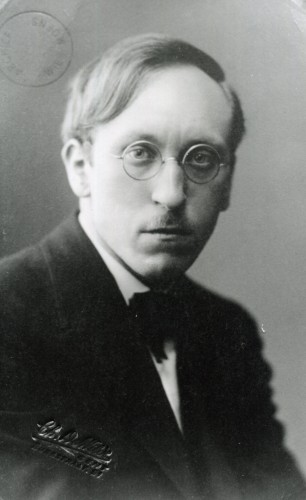 Le 5 février 1982, Wies Moens quittait ce monde, lui, le principal poète moderne d’inspiration thioise et grande-néerlandaise. Il est mort en exil, pas très loin de nos frontières, à Geleen dans le Limbourg néerlandais. Dans un hebdomadaire comme “’t Pallieterke”, qui cultive l’héritage national flamand et l’idéal grand-néerlandais, Wies Moens est une référence depuis toujours. Il suffit de penser à l’historien de cet hebdomadaire, Arthur de Bruyne, aujourd’hui disparu, qui s’inscrivait dans son sillage. Pour commémorer le trentième anniversaire de la disparition de Wies Moens, “Brederode”, qui l’a connu personnellement, lui rend ici un hommage mérité. L’exilé Wies Moens n’avait-il pas dit, en 1971: “La Flandre d’aujourd’hui, l’agitation politicienne qui y sévit, l’art, la littérature, tout cela ne me dit quasi plus rien. Je ne ressens aucune envie de revenir de mon exil”?
Le 5 février 1982, Wies Moens quittait ce monde, lui, le principal poète moderne d’inspiration thioise et grande-néerlandaise. Il est mort en exil, pas très loin de nos frontières, à Geleen dans le Limbourg néerlandais. Dans un hebdomadaire comme “’t Pallieterke”, qui cultive l’héritage national flamand et l’idéal grand-néerlandais, Wies Moens est une référence depuis toujours. Il suffit de penser à l’historien de cet hebdomadaire, Arthur de Bruyne, aujourd’hui disparu, qui s’inscrivait dans son sillage. Pour commémorer le trentième anniversaire de la disparition de Wies Moens, “Brederode”, qui l’a connu personnellement, lui rend ici un hommage mérité. L’exilé Wies Moens n’avait-il pas dit, en 1971: “La Flandre d’aujourd’hui, l’agitation politicienne qui y sévit, l’art, la littérature, tout cela ne me dit quasi plus rien. Je ne ressens aucune envie de revenir de mon exil”?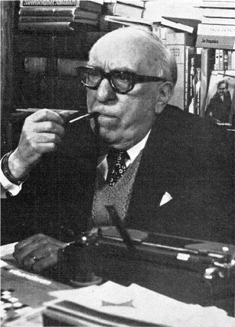 Wies Moens ne cessera plus jamais de nous interpeller, surtout grâce à ses premiers poèmes, dont le sublime “Laat mij mijn ziel dragen in het gedrang...”, paru dans le recueil “De Boodschap”. Il l’a écrit à 21 ans, la veille de Noël 1918, quand il était interné à la prison de Termonde, pour avoir été étudiant et activiste. Dans le deuxième ver de ce poème, il esquisse déjà tout le travail qu’il s’assigne, celui d’éduquer le peuple:
Wies Moens ne cessera plus jamais de nous interpeller, surtout grâce à ses premiers poèmes, dont le sublime “Laat mij mijn ziel dragen in het gedrang...”, paru dans le recueil “De Boodschap”. Il l’a écrit à 21 ans, la veille de Noël 1918, quand il était interné à la prison de Termonde, pour avoir été étudiant et activiste. Dans le deuxième ver de ce poème, il esquisse déjà tout le travail qu’il s’assigne, celui d’éduquer le peuple: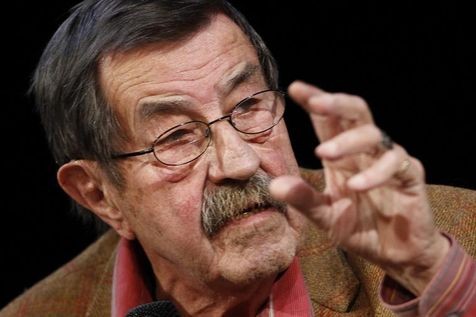

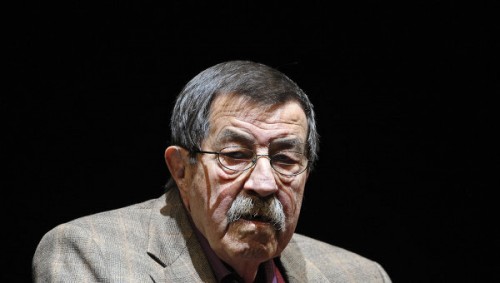




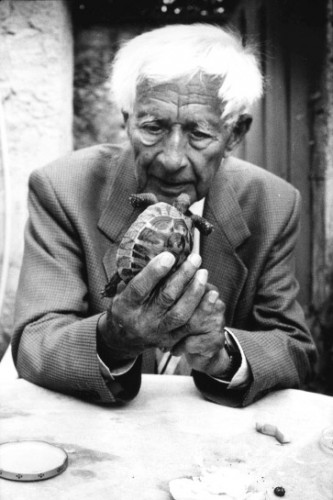 Ernst Jünger says in his acceptance speech for the prestigious Goethe prize in 1982, "I've had the experience that one meets the best comrades in no-man's-land. I've always been pleased with my troops (Mannschaft) in war and my readership in peace. A hand that holds a weapon with honor, holds a pen with honor. It is stronger than any atom bomb, or any rotary press." With these words Jünger bestows an honour on us, his readership. He equates us with his comrades-in-arms in times of peace, but is it a wonder after all? If you are a reader of Ernst Jünger, you must be in either one of two camps, those who consider his opus with genuine admiration or the detractors, those sceptics, "whose contribution does not equal to one blade of grass, one mosquito wing".
Ernst Jünger says in his acceptance speech for the prestigious Goethe prize in 1982, "I've had the experience that one meets the best comrades in no-man's-land. I've always been pleased with my troops (Mannschaft) in war and my readership in peace. A hand that holds a weapon with honor, holds a pen with honor. It is stronger than any atom bomb, or any rotary press." With these words Jünger bestows an honour on us, his readership. He equates us with his comrades-in-arms in times of peace, but is it a wonder after all? If you are a reader of Ernst Jünger, you must be in either one of two camps, those who consider his opus with genuine admiration or the detractors, those sceptics, "whose contribution does not equal to one blade of grass, one mosquito wing". 

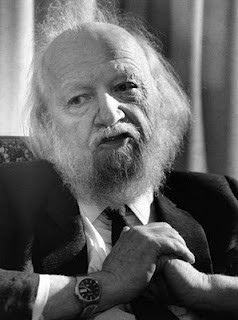 Né le 19 septembre 1911, William Golding peut être considéré comme le grand marginal de la littérature anglaise contemporaine. Le vécu existentiel, pour lui, a été le plus intense pendant la seconde guerre mondiale, où il a servi dans la marine —Golding était présent quand le Bismarck a coulé et au moment du débarquement anglo-américain de Normandie. Il a pris conscience de ce que les hommes pouvaient mutuellement s’infliger. Les expériences de la guerre ont conduit Golding, qui, avant les hostilités, croyait encore au perfectionnement de l’homme en tant qu’être social, à penser “que l’homme produit de la méchanceté comme les abeilles produisent du miel”. Le produit littéraire de cette grande désillusion est un roman, paru en 1954, et intitulé “Lord of the Flies” (en français: “Sa Majesté des Mouches”). Ce roman a permis à Golding d’acquérir la célébrité car il est devenu un succès international.
Né le 19 septembre 1911, William Golding peut être considéré comme le grand marginal de la littérature anglaise contemporaine. Le vécu existentiel, pour lui, a été le plus intense pendant la seconde guerre mondiale, où il a servi dans la marine —Golding était présent quand le Bismarck a coulé et au moment du débarquement anglo-américain de Normandie. Il a pris conscience de ce que les hommes pouvaient mutuellement s’infliger. Les expériences de la guerre ont conduit Golding, qui, avant les hostilités, croyait encore au perfectionnement de l’homme en tant qu’être social, à penser “que l’homme produit de la méchanceté comme les abeilles produisent du miel”. Le produit littéraire de cette grande désillusion est un roman, paru en 1954, et intitulé “Lord of the Flies” (en français: “Sa Majesté des Mouches”). Ce roman a permis à Golding d’acquérir la célébrité car il est devenu un succès international.  Dans “Lord of the Flies” —le titre, rappellons-le, est une traduction littérale du concept hébraïque de “Belzébuth”, le “Seigneur des Mouches”— le tête de porc fichée sur un pieu, que les “chasseurs” offrent en sacrifice pour conjurer le danger d’un “monstre” qui les menacerait, symbolise le Mal. En voyant cette tête de porc, entourée d’une dégoûtante nuée de mouches, Simon, qui finira martyr, reconnaît que l’homme lui-même est ce “monstre”, une créature déchue.
Dans “Lord of the Flies” —le titre, rappellons-le, est une traduction littérale du concept hébraïque de “Belzébuth”, le “Seigneur des Mouches”— le tête de porc fichée sur un pieu, que les “chasseurs” offrent en sacrifice pour conjurer le danger d’un “monstre” qui les menacerait, symbolise le Mal. En voyant cette tête de porc, entourée d’une dégoûtante nuée de mouches, Simon, qui finira martyr, reconnaît que l’homme lui-même est ce “monstre”, une créature déchue.

